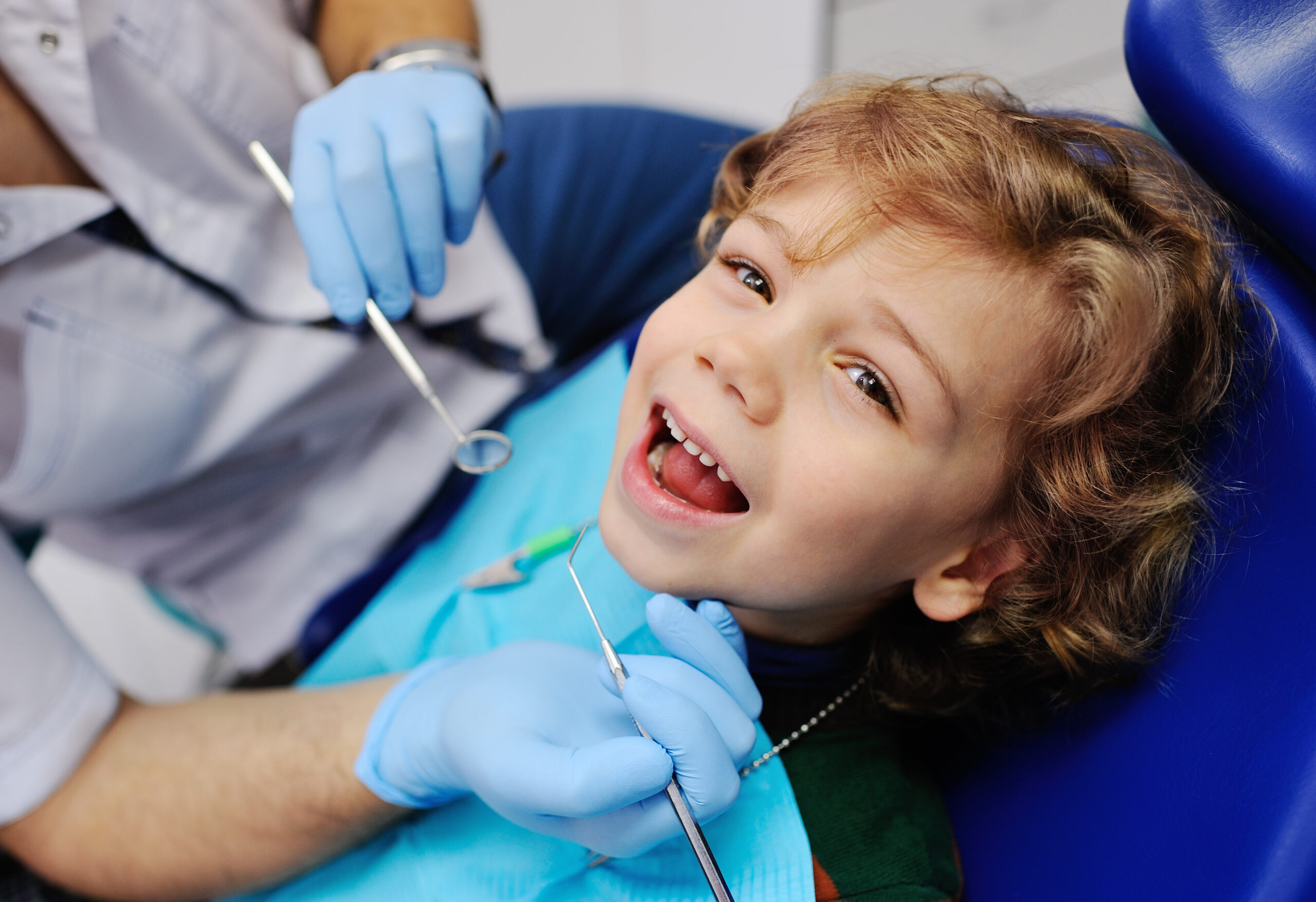EARLY ORTHODONTIC TREATMENT
Intercept and fix orthodontic problems early
Early orthodontic treatment, also called interceptive treatment or phase 1 treatment, is an orthodontic treatment performed while some baby teeth are still present. Early orthodontic treatment can begin as early as seven years of age. Not every child needs early treatment, but sometimes it is necessary to ensure minor problems don’t become more serious if left untreated.
Early treatment aims to intercept the developing problem, eliminate the cause, guide the growth of facial and jawbones, and provide adequate space for incoming permanent teeth. A patient may require a second course of treatment after all permanent teeth have come in to move the permanent teeth into their best positions.
The three most common types of treatment include wearing a palatal expander, partial braces and a retainer. The primary goal is often to address skeletal issues with the jaw and alignment before or soon after permanent teeth emerge.
The best way to determine if a child can benefit from early orthodontic treatment is to visit Dr. Valeriano for a consultation. He will do dental X-rays and conduct an oral examination to see how the permanent teeth and the jaw are developing.
What Age Should My Child Visit An Orthodontist?
The American Association of Orthodontists (AAO) and Valeriano Orthodontics recommend your child’s first visit to the orthodontist be around age 7. At that age, your child has enough permanent teeth for an orthodontist to evaluate the developing teeth and the jaws and spot subtle problems even in young children. While your child’s teeth may appear straight, there may be a problem that needs to be monitored or corrected.
Many children do not need early treatment, but an early visit can provide the orthodontist and the parent with a good idea of what treatment may be needed at a later age and what can be done during phase I to reduce the need for treatment later. Treating orthodontic issues early gives us the best chance for lifelong results.
There are generally three outcomes of an initial consult with an orthodontist:
- No treatment is expected to be necessary at any age
- Treatment may be needed in the future, so the child will come in periodically to be rechecked
- Early orthodontic treatment will be recommended
What Does Early Orthodontic Treatment Help?
Some orthodontic problems are inherited, while others may result from accidents, dental disease, habits or abnormal swallowing. Early orthodontic treatment may help the following issues:
- Underbites
- Crossbites
- Very crowded teeth
- Excessively spaced teeth
- Extra or missing teeth
- Teeth that don’t meet or meet abnormally
- Thumb-, finger-, or pacifier- sucking that is affecting the teeth or jaw growth
- Open bites
- Deep bites
- Overjets
- Teeth that don’t emerge in the correct sequence
- Missing teeth
- Ankylosed (or sinking) teeth
Advantages of Early Orthodontic Treatment
By age seven, your child’s mouth has enough structure for Dr. Valeriano to know how it will develop as the permanent teeth start to emerge. Early orthodontic treatment allows him to address the structure of the jaw and teeth before all of the permanent teeth have erupted, helping to prevent more severe problems and controlling the location of the permanent teeth. Even if your child doesn’t need orthodontic treatment immediately, a consultation will uncover how an orthodontist can help your child if future treatment is necessary.
Orthodontic treatment and a child’s growth are meant to complement each other. By timing treatment to stages of dental development, your orthodontist can take advantage of your child’s oral growth and development. Problems that can be treated in a growing child may alleviate more drastic and invasive procedures needed later.
How to tell if your child may need early orthodontic treatment:
- Early or late loss of baby teeth (before age 5, after age 13)
- Difficulty chewing or biting
- Mouth breathing
- Thumbsucking after age five
- Speech impediments
- Protruding teeth (the top teeth and the bottom teeth extend away from each other)
- Teeth that don’t come together in a normal manner or even at all
- Shifting of the jaw when your child opens or closes their mouth
- Crowded front teeth around age seven or eight
The Benefits of Early Intervention
- Enables correct biting and chewing
- Corrects harmful oral habits
- Intercepts developing problems
- Guide the growth of the jawbones for better alignment and straighter teeth
- Lowers the risk of damage to protruding front teeth
- Guides permanent teeth into a more favorable position
- Establishes jaw and teeth structure for long-term stability
- Improves appearance
- Reduces or negates treatment as a teenager


